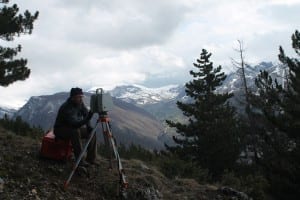A step closer in earthquake forecasting
By Joanna P Faure Walker, on 16 August 2019
Dr Zoe Mildon, former IRDR PhD student and now lecturer at University of Plymouth, together with Dr Joanna Faure Walker (UCL IRDR), Prof Gerald Roberts (Birkbeck) and Prof Shinji Toda (Tohoku University IRIDeS), have published a paper in Nature Communications showing we are a step closer in understanding which faults could rupture in the next earthquake:
In this paper, we use long-term stress loading on faults in the central Apennines, Italy, together with stress loading from historical earthquakes in the region to test whether we can identify faults which have a positive stress and hence are ripe for rupture. We found that 97% large earthquakes within the central Italian Apennines from 1703-2006 occurred on positively stressed faults. Therefore, we can use our modelling to calculate which faults are currently positively stressed and hence help us to determine which faults could rupture in the future. This is not the same as earthquake prediction – saying exactly when and where an earthquake will occur, but it is a step closer to better seismic hazard assessments and understanding why, how and when earthquakes occur.

Dr Joanna Faure Walker standing by a limestone fault scarp in the central Italian Apennines
The paper is available through open access: Mildon et al. (2019)
An article was written about the paper in the Daily Mail
The original press release is available here.
This work is part of the IRDR’s continuing collaboration with Tohoku University, IRIDeS (International Research Institute for Disaster Science). Our collaboration has led to papers including topics such as earthquake stress transfer (Mildon et al., 2016), disaster fatalities (Suppasri et al., 2016), and temporary housing (e.g. Naylor et al., 2018).
 Close
Close




